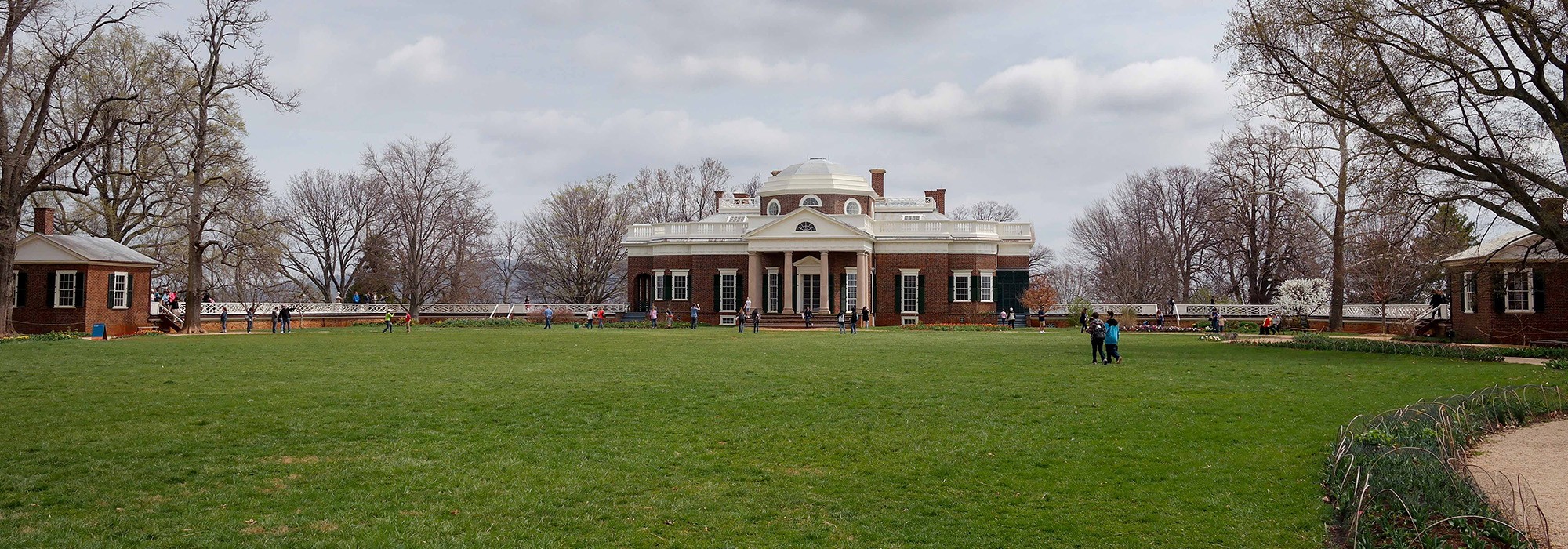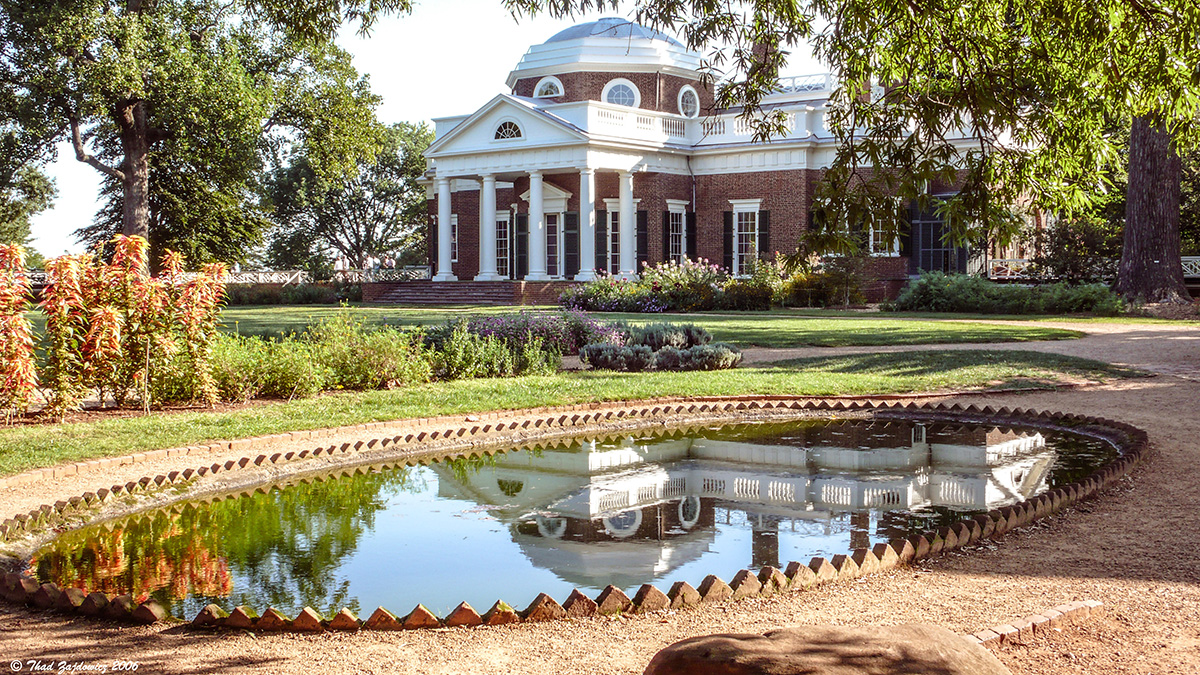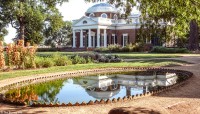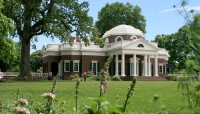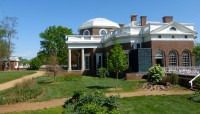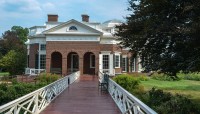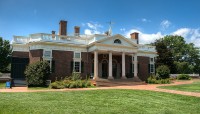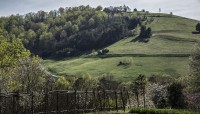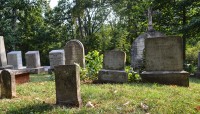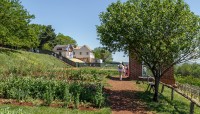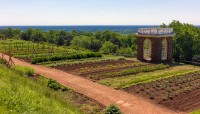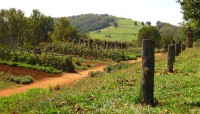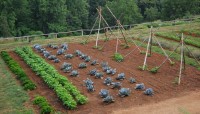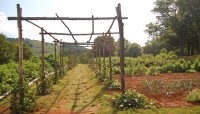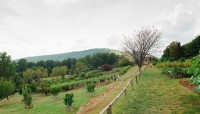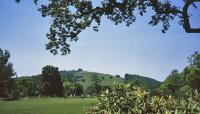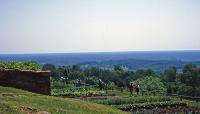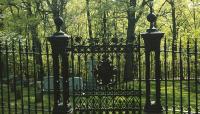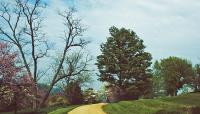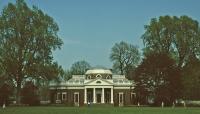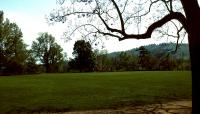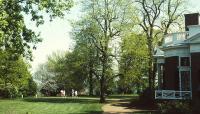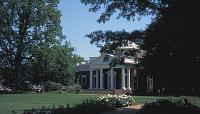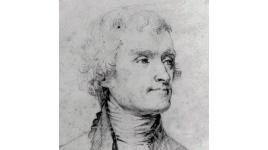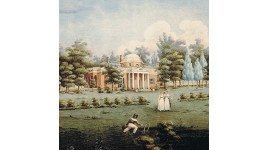Landscape Information
Located three miles southeast of the University of Virginia, the mountaintop home of Thomas Jefferson was the central property of his 5,000-acre system of plantations in Albemarle County, Virginia. Jefferson redesigned and rebuilt the house and grounds over more than 40 years, creating an ornamental farm that combined function and beauty. Monticello, the “home farm,” included acres of woodland and gardens, with Mulberry Row as a hive of activity. Between 1770 and 1831 Mulberry Row was populated by more than twenty dwellings, workshops, and storehouses, where enslaved people, indentured servants, and others lived and worked. It is paralleled to the south by a two acre, 1,000-foot-long vegetable garden planted with over 330 varieties. South of the garden are two hillside orchards, components of Jefferson’s eight acre “fruitery,” with over 150 varietals. The cultivated landscape around the house highlights plants possessing botanical and design significance. The large West Lawn extends from the house, enclosed by flower borders of ornamental and functional plants from around the world.
Monticello is ringed by four largely level “Roundabout” roadways, encircling the mountain at different elevations. Connected by sloping diagonal roads, they provide a scenographic uphill route through the Monticello Grove, (a designed open woodland of Jefferson’s favorite native and imported trees), and to the family cemetery where Jefferson is buried. The property was sold in 1831, five years after his death, and acquired by the Thomas Jefferson Foundation in 1923.
In 2018 the Foundation concluded the “Mountaintop Project,” a multi-year effort to rehabilitate the site to its appearance during Jefferson’s tenancy. The project included the reconstruction of a Mulberry Row cabin that was likely inhabited by the enslaved Hemings’ family. In 2022 the site’s Burial Ground for Enslaved People was rehabilitated and the following year the Contemplative Site, which features a steel wall engraved with the names of Monticello’s enslaved individuals, was unveiled. Both projects were designed by HGA and Nelson Bryd Woltz Landscape Architects.The property was designated a National Historic Landmark in 1975 and a UNESCO World Heritage Site in 1987.



